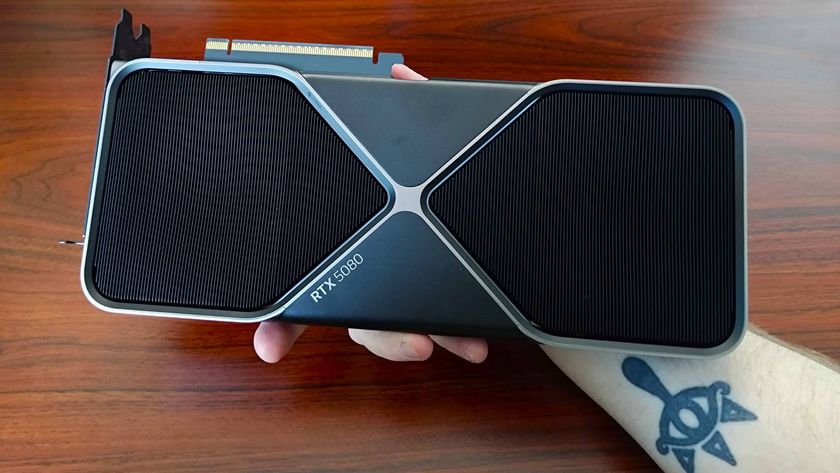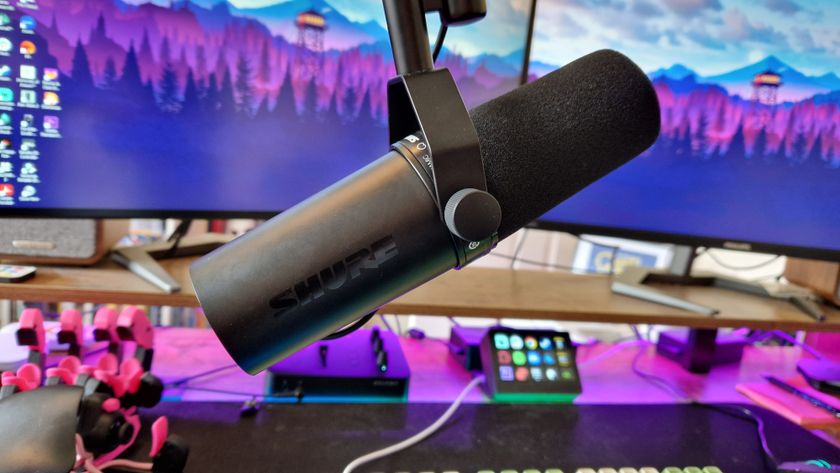Cyberpunk 2077 shows just how important DLSS 3 is for RTX 4060
We get hands on with the Nvidia RTX 4060 and Cyberpunk 2077

The Nvidia GeForce RTX 4060 will arrive on the scene in just a few days' time, and I’ve been putting the entry-level option through its paces ahead of launch. Now, I don’t want to say I deliberately make the latest graphics cards sweat like some GPU torturer, but I am partial to a Cyberpunk 2077 Night City jaunt, as it helps keep benchmarking interesting. If my latest night out on the dystopian town has hammered home anything, it’s that DLSS 3 is somewhat invaluable, and it’s going to elevate your budget PC gaming experience in a big way.
Of course, if you’re a seasoned gaming PC enthusiast who already owns the best graphics card available, you’re probably already aware of DLSS. However, if you’ve got a cheap and cheerful rig and you’re planning on diving into Cyberpunk 2077: Phantom Liberty when it lands, you’re perhaps not even aware that AI upscaling could be the key to better performance.
Before we dive into my experience playing Cyberpunk 2077 with an RTX 4060, it’s probably worth recapping what Nvidia DLSS actually is. In a way, it’s multiple proprietary GeForce tools smooshed into one, but the package mainly comprises clever artificial intelligence tech. Don’t worry, rather than using something like ChatGPT to mess around with your gaming PC settings, Nvidia instead uses machine learning to boost fps beyond your GPUs natural capabilities.
That’s not to say all versions of the GeForce tool are equal, as while all RTX cards are DLSS 2 compatible, DLSS 3 is an RTX 4000 exclusive. The difference? Well, the latest version boasts Frame Generation, a feature that effectively boosts fps by filling in the gaps with generated frames, and AI upscaling, while DLSS 2 sticks with dynamic upscaling using lower resolutions. Both are pretty great at uplifting performance without too many caveats, but it’s clear to see the benefits of Frame Generation while playing Cyberpunk 2077 at 1080p.
To help illustrate exactly what I mean ahead of our Nvidia RTX 4060 review, Nvidia has granted me permission to take you to Night City a few days early using the upcoming GPU. It’s worth mentioning that the 60-series card caters to 1080p gameplay with Ultra settings enabled, so the graphics card maker has suggested we use the following settings:
Cyberpunk 2077 settings (1080p)
- Ambient Occlusion: High
- Anisotropy: 16
- Cascaded Shadows Range: High
- Cascaded Shadows Resolution: High
- Color Precision: High
- Contact Shadows: On
- Depth of Field: On
- Distant Shadows Resolution: High
- Improved Facial Lighting Geometry: On
- Level of Detail: High
- Local Shadow Mesh Quality: High
- Max Dynamic Decals: Ultra
- Mirror Quality: High
- DLSS: Balanced
- Ray Traced Lighting: Ultra
- Ray Traced Reflections: On
- Ray Traced Shadows: On
- Ray Tracing: On
- Screen Space Reflections Quality: Ultra
- Subsurface Scattering Quality: High
- Texture Quality: High
- Volumetric Cloud Quality: Ultra
- Volumetric Fog Resolution: Ultra
I want to kick off this comparison by saying that DLSS 2 does an admirable job of boosting fps with the above settings. After all, Cyberpunk 2077 is notoriously difficult to run, and throwing ultra-ray tracing into the mix makes for a heavy workload. Still, just adding Super Sampling to the settings concoction results in average frame rates of around 67fps – a comfortable figure that wouldn’t be achievable without dialing back some of the game’s tasty visuals. I’ve included a short clip below I captured during testing, which should help you judge the results for yourself.
Sign up to the 12DOVE Newsletter
Weekly digests, tales from the communities you love, and more
But hey, you’re not here for tricks your RTX 3060 can pull off, so here’s a peek at DLSS 3 and Frame Generation in action. As you can see in the next clip, the RTX 4060 is able to reach over 100fps by filling in the frame rate gaps with no visual strings attached. You may struggle to tell by watching the gameplay snippet but toggling the setting on makes controlling V feel a hell of a lot smoother too – a factor that’ll please any of you out there with a high refresh rate monitor.
As someone that’s spent a lot of time in new PC games trying to conjure up ways to boost fps, I can confirm that even clawing back one or two frames is no easy feat. Sure, you can mess around with shadows, lighting, and other visual bells and whistles to speed things up, but you’ll ultimately find that you need you crank things way down low to yield better results. So, even though the feature helps GPUs like the one in our RTX 4090 review reach far greater heights, I’m still fairly impressed by the above entry-level results.
Look, I get it, some of you out there aren’t really interested in playing PC games at 1080p in 2023, and I get why you’d want to perhaps aim for 1440p or 4K. That said, if you are eager to trade away visual flair for higher resolutions, I reckon you should look at the above figures as an opportunity rather than a restriction. No one is forcing you to stick with the settings used above, and switching off ray tracing might just serve as an equivalent exchange (insert FullMetal Alchemist joke here).
Again, Cyberpunk 2077 is a bit of a demanding bugger, and Frame Generation enables the RTX 4060 to pull off big 1080p moves. It’s important to reiterate that DLSS 3 is only compatible with a small selection of games right now, so you’ll definitely want to wait for a full review for native benchmarks across a wider selection of games. Nevertheless, If you’re hyped for Phantom Liberty and deliberating on whether to make the leap to entry-level Lovelace, perhaps this early performance glimpse will come in useful.
Alternatively, if you're looking for a card that's both DLSS 3 compatible and can handle resolutions over 1080p, you're in luck. Our Nvidia RTX 4070 review already puts the green team's mid-range contender to the test, and we've gathered a list of today's top GeForce graphics card deals to save you going on the hunt.
Looking for a rig that’s already armed with a GPU? Check out our best gaming PC guide for a selection of mighty, prebuilt machines. Alternatively, take a look at our best gaming laptop list and pick up the perfect portable powerhouse.

I’ve been messing around with PCs, video game consoles, and tech since before I could speak. Don’t get me wrong, I kickstarted my relationship with technology by jamming a Hot Wheels double-decker bus into my parent’s VCR, but we all have to start somewhere. I even somehow managed to become a walking, talking buyer’s guide at my teenage supermarket job, which helped me accept my career fate. So, rather than try to realise my musician dreams, or see out my University degree, I started running my own retro pop culture site and writing about video games and tech for the likes of TechRadar, The Daily Star, and the BBC before eventually ending up with a job covering graphics card shenanigans at PCGamesN. Now, I’m your friendly neighbourhood Hardware Editor at GamesRadar, and it’s my job to make sure you can kick butt in all your favourite games using the best gaming hardware, whether you’re a sucker for handhelds like the Steam Deck and Nintendo Switch or a hardcore gaming PC enthusiast.






















